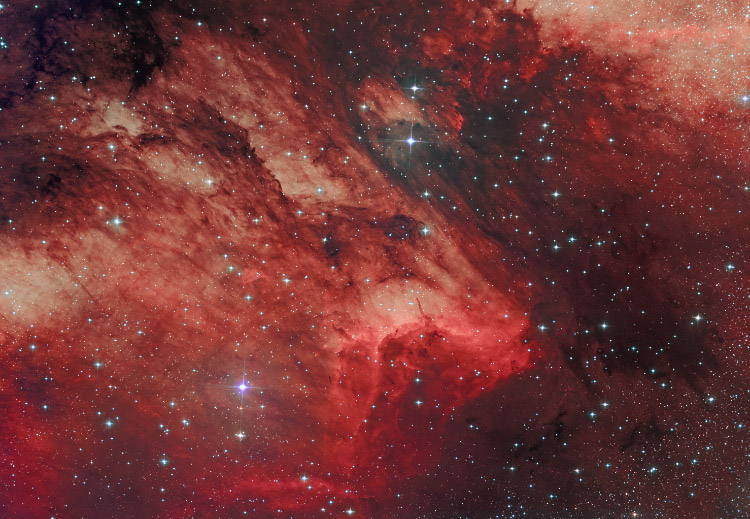
About this Image |
|
|
The Pelican Nebula (IC 5070) in central Cygnus, here shown in narrowband color, is divided from the larger North America Nebula by a molecular cloud filled with dark dust.
Highly energised shock fronts give a high contrast to the adjacent areas, filled with complex dark gas and dust lanes.
|
|
|
| Optics |
410mm cassegrain in corrected prime focus at f/3 |
| Mount | MK-100 GEM |
| Camera | SBIG STL-11000M at -15C, internal filter wheel |
| Filters | Astronomik H-alpha (15 nm), O-III (15 nm), blue |
| Date | June 03-13, 2005. |
| Location | Wildon/Austria |
| Sky Conditions | mag 5.5 sky, raw FWHM 2.5-3", temperature 15-18 C, |
| Exposure | Ha:O-III:B = 90:90:30 minutes (30-minute sub-exposures Ha and O-III, 10 min B), all 1x1. |
| Processing | Image aquisition, calibration and color combine in Maxim DL 4.10; O-III channel blended to G and B to get the right teal balance, curves, color balancing, light unsharp mask in Photoshop; |